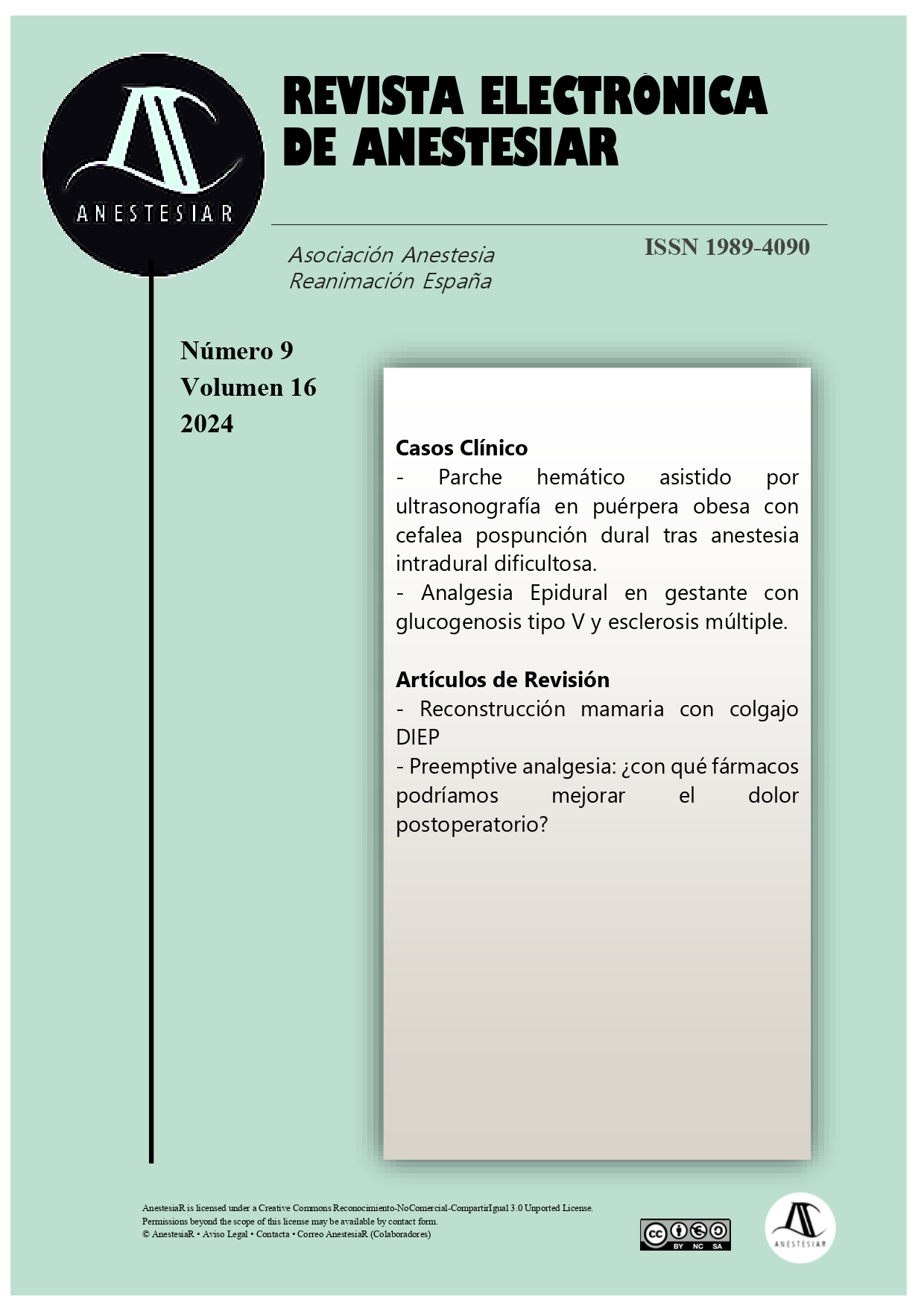Ultrasonography-assisted blood patch in an obese puerperal woman with post-dural puncture headache after difficult spinal anesthesia
DOI:
https://doi.org/10.30445/rear.v16i9.1239Keywords:
post dural puncture headache, blood patch, ultrasonography, Intradural, obese, PregnantAbstract
Intradural anaesthesia is considered the technique of choice for caesarean sections, unless contraindicated, as it offers advantages over general anaesthesia. However, much of its success lies in the correct positioning, identification and palpation of landmarks such as the spinous processes and interspinous spaces. Therefore, in patients with poorly identified landmarks, such as obese pregnant women, this is a risk factor for multiple punctures and needle redirection, increasing the possibility of complications such as paraesthesia and post dural puncture headache (PDPH), among others. The following is the case of a pregnant woman with a muscle mass index (BMI) of 60 kg/m2 who underwent caesarean section under intradural anaesthesia and developed PDPH. As the landmarks were not visible on palpation, it was decided to perform an ultrasonography-assisted blood patch.
References
- Li M, Ni X, Xu Z, Shen F, Song Y, Li Q, et al. Ultrasound-assisted technology versus the conventional landmark location method in spinal anesthesia for cesarean delivery in obese parturients: A randomized controlled trial. Obstetric Anesthesia Digest. 2019;39(4):220–1. doi:10.1097/01.aoa.0000603824.44417.f5
- Ellinas EH, Eastwood DC, Patel SN, Maitra-D’Cruze AM, Ebert TJ. The effect of obesity on neuraxial technique difficulty in pregnant patients: A prospective, observational study. Anesthesia & Analgesia. 2009;109(4):1225–31. doi:10.1213/ane.0b013e3181b5a1d2
- Urfalioğlu A, Bilal B, Öksüz G, Bakacak M, Boran ÖF, Öksüz H. Comparison of the landmark and ultrasound methods in cesarean sections performed under spinal anesthesia on obese pregnants. The Journal of Maternal-Fetal & Neonatal Medicine. 2016;30(9):1051–6. doi:10.1080/14767058.2016.1199677
- Creaney M, Mullane D, Casby C, Tan T. Ultrasound to identify the lumbar space in women with impalpable bony landmarks presenting for elective caesarean delivery under spinal anaesthesia: A randomised trial. International Journal of Obstetric Anesthesia. 2016;28:12–6. doi:10.1016/j.ijoa.2016.07.007
- Swetha Ramani C, Gayathri B, Urkavalan K, Pushparani A, Rajendran A. Comparison of the time taken for subarachnoid block using ultrasound-guided method versus landmark technique for cesarean section – a randomized controlled study. Journal of Anaesthesiology Clinical Pharmacology. 2021;37(2):205. doi:10.4103/joacp.joacp_35_20
Downloads
Published
How to Cite
Issue
Section
License
Copyright (c) 2024 Revista Electrónica AnestesiaR

This work is licensed under a Creative Commons Attribution-ShareAlike 4.0 International License.
 Envío y derechos de autor
Envío y derechos de autor


 Revista Electrónica AnestesiaR by
Revista Electrónica AnestesiaR by 